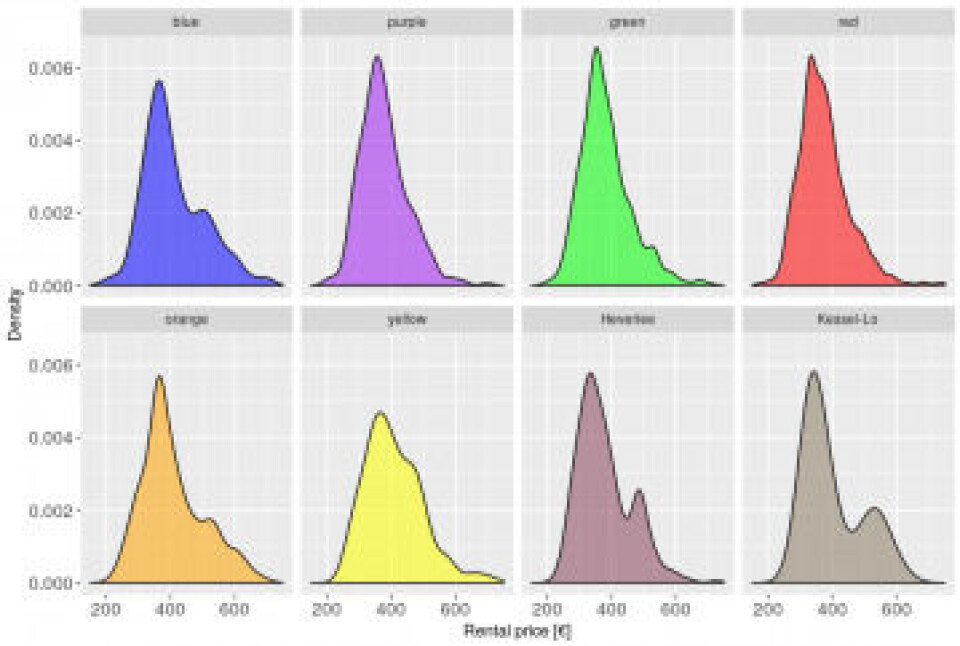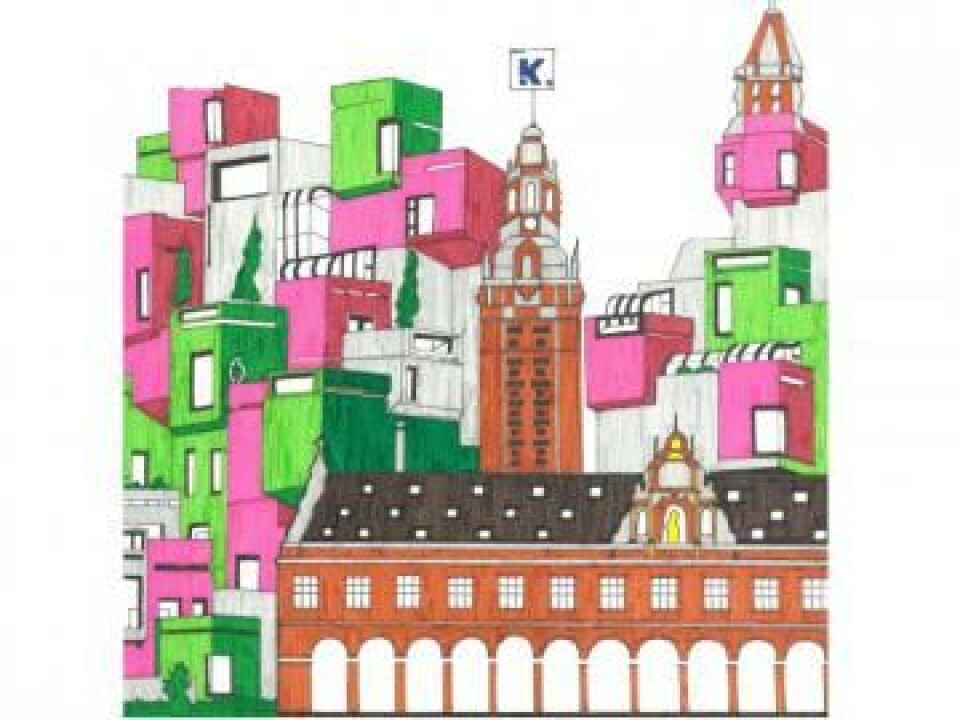article> Special Feature
SPOTLIGHT: The struggles & misconceptions of finding a cheap kot in Leuven

These data seem to suggest that night-time noise affects the prices less than the location. However, there is no simple pattern where prices get cheaper the further away they are from the centre.
by Rani Goelen, Mathilde Dams & Seyhan Kâhya
Special Edition
Spring is in full bloom, the last vacation before the exams start is over, and the search for the perfect ‘kot’ (Flemish for a student room) starts again for many students in Leuven. We provide a comprehensive view of the housing market they are about to dive into.

A look into the Kotwijs database
The Housing Department of the KU Leuven maintains the Kotwijs database, which students can access online and use to find a suitable kot depending on their preferences such as proximity to certain places, price ranges, room types and sizes. Currently, the Kotwijs database contains around 20,000 entries, from all the 42,000 koten available in Leuven. Landlords can approach the Housing Department and advertise their rooms for rent on Kotwijs.
Veto / The Voice has received a subset of the database of over 4,000 entries for analysis and visualization. We have divided the entries to Leuven’s traffic zones and the municipalities Heverlee and Kessel-Lo for reasons of visualization and finding possible differences, as shown in the map below.
The following boxplot depicts the price range of the respective zones. The line in the middle of the box marks the median value, which means 50% of the other values are more expensive and 50% are cheaper. The boxes depict the price range which contains the middle 50% of the entries. The whiskers outside of the boxes mark the lower and higher 25% of entries. The dots mark outliers, particularly cheap or expensive koten compared to the overall distribution within the zone.

This plot is interesting because the data at hand refutes the misconception that a room in Heverlee would be significantly cheaper than in the city center. However, it is true that the median price for Heverlee, €362.00, is a bit cheaper than the median of all entries of our sample, €370.38. Yet, the fact that there are more rooms within the ring than in Heverlee makes it likely to find a room of a lower cost in Leuven. Also, the distributions suggest that the differences are only minor. The pricey locations of Leuven are situated in the Grote Markt and the Vismarkt, which also are the cosier corners within the city center. Hence, Koten at the ring or on the Oude Markt are not cheaper per se, despite the noise nuisance. These data seem to suggest that nighttime noise affects the prices less than the location. However, there is no simple concentric pattern where prices get cheaper the further away they are from the centre. Thus, the most important thing remains to find a place suitable for one’s own preferences, such as proximity to one’s campus, room size or having a private shower.
The density plots below show the distribution patterns of prices per zone. Furthermore, some zones show multiple peaks and hence a multimodal distribution, as for instance the blue, orange, and yellow zone, Heverlee and Kessel-Lo. This kind of distribution shows that certain rental prices occur with an increased frequency. More specifically, it seems as if these zones have a pricey segment of student rooms. People looking for low priced student rooms in the city center might want to have a look in the red zone, where a relatively high number of rooms cost less than €275.

Supply and demand throughout the years
It doesn’t seem easy to tune supply and demand in Leuven and the koten market has known many evolutions the last years. After a long-standing shortage of koten between 2012 and 2017, about 2,600 rooms were added. The present number of rooms circles around 42,000. Ludo Clonen, head of the Student Housing Unit at KU Leuven stated: “From 2011 until 2013 there was a shortage of rooms on the market, which caused the prices to go up quite drastically. The private sector, but the KU Leuven also, have since then built extra residences. Between 2016 and 2018 a decent surplus of koten came about, which made the renting prices stabilize. At the moment, that surplus is smaller than before.”
Support during the search
It’s not that easy for students to find a room within that pool of 42,000. The Housing Department of the university supports the search for a new student room in various ways. First and foremost, there are visiting days in the spring.
“On 30 March and 27 April, students can visit a residence, as well as the ones for reduced pricing as the regular ones from the university, and private residences. From that time on many private renters also put their koten available on the market. We also give new students guidance on how to find a good room.”
Students that weren’t able to make these dates can find the information on the site of the Housing Department. Clonen emphasises the importance of the Kotwijs site. “We advise students to find their place on the Kotwijs site, so they can be certain it has been checked.” Koten either have a blue label that signifies a control by the Housing Service, or a green label that signifies a more thorough check by the city.

New tenant law
The rental price can no longer go up when the contract is renewed. For renting contracts for student housing made from January first 2019, the common rule is that renting prices can only be indexed. Thus the renting price for the next contract must be the same as that of the first. The renter is allowed to index the prices. A division is possible between the renting price on the one hand and the prices for energy, water and telecommunication on the other hand. The prices can be changed, but must conform to the actual expenses. Clonen notices a stabilization of the renting prices for the last years: ‘The prices went up about 1,5 to 2 percent, which matches the index.’
Clonen has a last piece of advice for new students in Leuven: “Definitely visit different koten, read your contract carefully, and make sure you know what is part of the price. When your room has a kotlabel, that is obviously a surplus value.”





